'Nightmare Before Christmas' turns 25: Director Henry Selick on the making of a Halloween classic
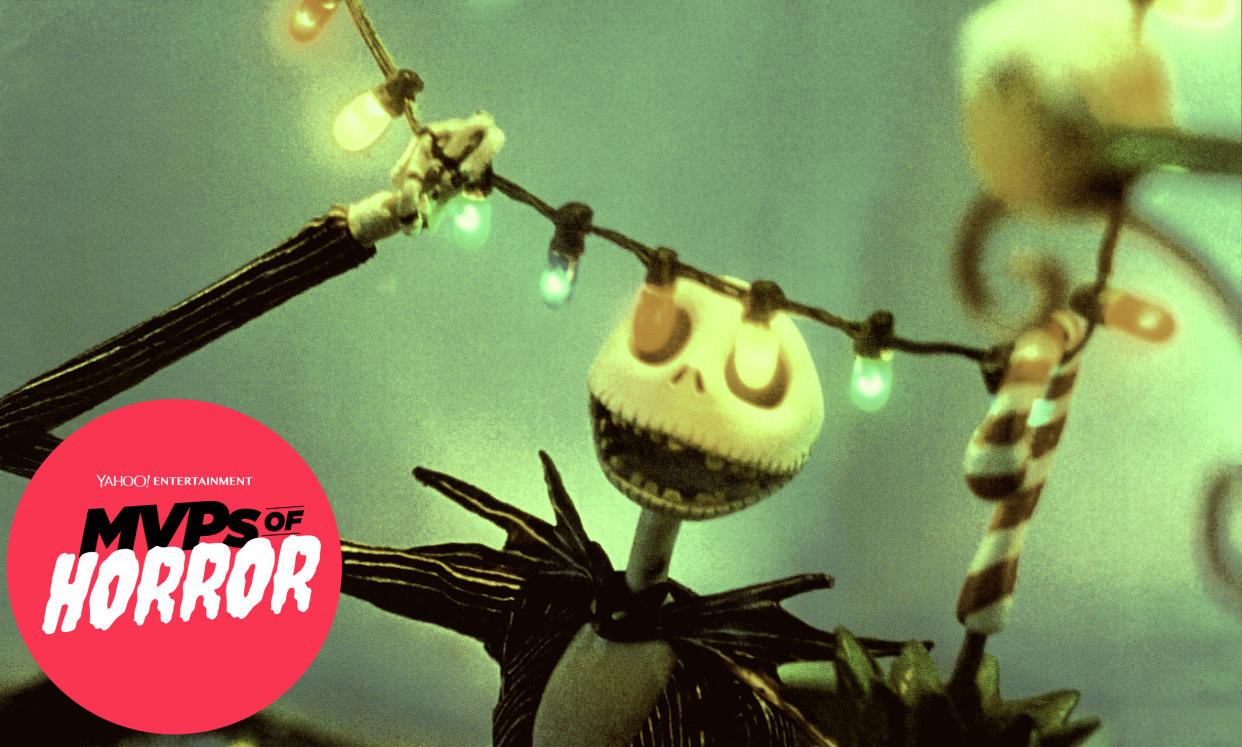
Believe it or not, there was a time when Halloween wasn’t synonymous with The Nightmare Before Christmas. The stop-motion animation musical, about a town of Halloween ghouls who decide to usurp Christmas from Santa Claus, was only the 27th highest-grossing film of 1993. But like The Wizard of Oz before it, Nightmare grew through the years from a modest hit to a fantasy classic. Now, 25 years after his screen debut on Oct. 13, 1993, protagonist Jack Skellington’s face lurks on everything from dresses at Hot Topic to plush toys at Disneyland.
That Nightmare merchandise has developed into a billion-dollar industry is still a total shock to animator Henry Selick, who directed the film based on the designs and concepts of producer Tim Burton. From the start, the whole project seemed wildly experimental: stop-motion animation shot like a feature film, with songs in lieu of a script, and a spooky, grotesque aesthetic that didn’t exactly scream “Disney.” But thanks to Burton’s power at the time (his string of pre-Nightmare hits included Beetlejuice, Batman, and Edward Scissorhands), the 76-minute film was made in two years with minimal interference by the studio, resulting in a product as spectacularly odd as everyone involved hoped it would be.
Speaking with Yahoo Entertainment on the 25th anniversary of Nightmare Before Christmas, Selick went in-depth about the process of creating his characters, his disagreements with Disney (the studio wanted Jack to have eyeballs) and Burton (who hated one of Selick’s favorite scenes), the twist ending that didn’t get made, and whether the glorious, laborious art of stop-motion animation will survive this century. (This interview has been edited and condensed.)
Watch the trailer:
Yahoo Entertainment: I went costume shopping with my kids this weekend and the Halloween store had a whole Nightmare Before Christmas section. Did you ever expect that?
Henry Selick: No way. It was the first serious stop-motion feature ever really done in this country. The crew and I were just so happy to be working on something we loved. We loved Tim’s original story, Danny [Elfman]’s songs, it just felt like, well, we’re going to love it and we hope other people do. But honestly: We didn’t care! We just wanted to make something great. The fact then that it has lived on is inexplicable to me, but we’re really happy.
Do you have any kind of say in the merchandise that is created?
Right at the very beginning while we were making the film, a stylebook was made, and some of my illustrators worked on that, because we wanted to make sure the merchandise really captured the design of the film. So that was really the extent of my having any sort of a say. Initially they didn’t make very much merchandise; it didn’t really sell, it was not a success when it first came out. But then it just turned into this behemoth. It’s made well over a billion dollars in merchandising. And I’m sad to say I don’t get any of that. Your first directing job in the feature business, the reward is simply that you got to direct a film. So that’s just how it goes.
I want to talk about the creation of specific characters. Let’s start with Jack Skellington, who has always reminded me of Fred Astaire.
He’s a combination of things, and, yes, Fred Astaire is an influence. Tim Burton did the original sketch of Jack Skellington. He was even thinner than our character in the film. And then Rick Heinrichs did the original sculpture. But for me as a director, I ended up acting him out a lot. Honestly, if you ever meet me, he kind of moves like me — better than me, more Fred Astaire than I’ll ever be! But it was just the simplest way to show [the other animators] how to bring him to life. He’s the combination of those things: the voice by Chris Sarandon, the singing voice by Danny, and Tim’s beautiful brilliant design — I think somewhat influenced by Charles Addams — and then my animators, who are all actors who act through the characters.

I understand you made some changes early on to Jack’s appearance?
Oh, yes, minor ones. His costume was all black, basically, in the original design. But he was disappearing, so I had to find a way to get him to read. And putting stripes on him was the best look. I tried gray and other things. The idea of him having eyeballs — he never had them; it was something raised by a few people at Disney; they were frightened of this notion. But we made the sockets of his eyes sort of this dark, soft, reflective surface. It’s very subtle, but there’s sort of a glow in there, and nobody really misses him having eyeballs.
Did you ever try a version of Jack with eyeballs?
No, no, we were never going to do that. Tim, who was off doing two other movies while I directed this one, his attitude was: “If you get a good note from the studio, something you agree with, then do it. But otherwise, you don’t have to.” And at that point he had enough power, because he’d had such early success with live action. Here’s one thing: Because Jack doesn’t have eyeballs, if he’s going to look at something, he needs to turn his head. He can’t shift his eyes over. So that’s probably the only downside.
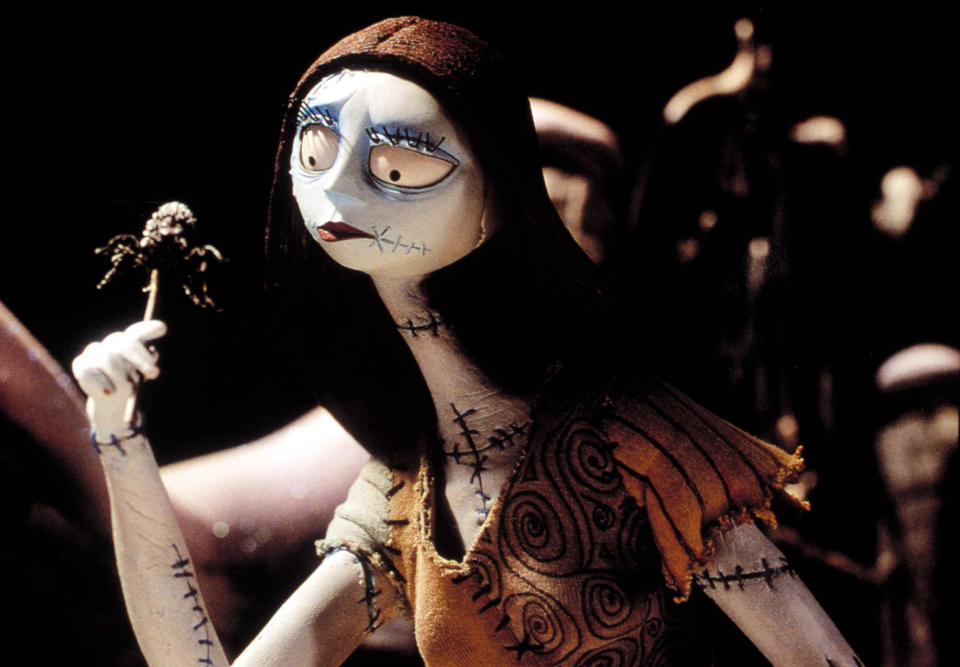
Sally is such a visual contrast to Jack. I understand that Tim did sketches for all of these characters, but did you have anyone in mind to model her on?
As far as her overall shape, that’s mostly from Tim, who did a great sketch. She’s very voluptuous, and Tim had a very voluptuous girlfriend at the time. I had an issue, when her arm gets pulled off when she’s running away from the evil scientist: What’s inside her if she’s a Frankenstein doll? But ultimately flesh, blood, it just felt wrong, awful, and I stuffed her full of fall leaves. So there’s little things like that. Or that fact that she is the opposite of Jack, who’s thin as a stick. Originally Sally’s ankles were too thin to support her body, literally couldn’t hold her up. So I put socks on to hide much bigger ankles; the ankles inside are metal. There are limitations in stop motion, that’s one, and you figure out a way to work with it. Also, being the fact that she’s a rag doll — like when she escapes from the evil scientist’s tower and breaks into some pieces and sews herself back together — we were trying to play with this idea that she’s kind of wobbly and unsure of herself, but she came off as being drunk. So we didn’t pursue that any further.

The enormous monster Oogie Boogie must have been one of your most difficult characters.
You know, only Jack, Sandy Claws, and Zero were the original characters that were done in the 1980s, when we all worked at Disney, and Tim had this idea to do a TV special in stop-motion animation. Everyone else came later. But Tim gave us a little napkin sketch of Oogie Boogie, who was the size of a child. And while he would have been easier to animate [at that size], he just didn’t serve a purpose, someone who can swallow things up and be truly terrifying. So I had to make him giant. And there wasn’t an issue with that size change except it made it very, very difficult to animate. If Jack Skellington is a stick, 14 inches tall, and Oogie Boogie is 2 feet tall, he’s a massive monster. It’s like a wrestling match to animate a puppet that size, with huge metal joints inside him. So it really pushed the limits of what we could do. There was certainly a huge challenge when he gets skinned alive, when his cloth burlap skin is removed and it’s revealed that he’s just full of bugs. That was especially tough. And everybody in the studio with extra time on their hands had to make Oogie bugs, because we needed hundreds.
How long did that shot take?
It might have been seven, eight days. Some shots you can do in a day, others can take two weeks if it’s complicated with a lot of characters. And that scene was only the one character, except there were hundreds of bug extras.
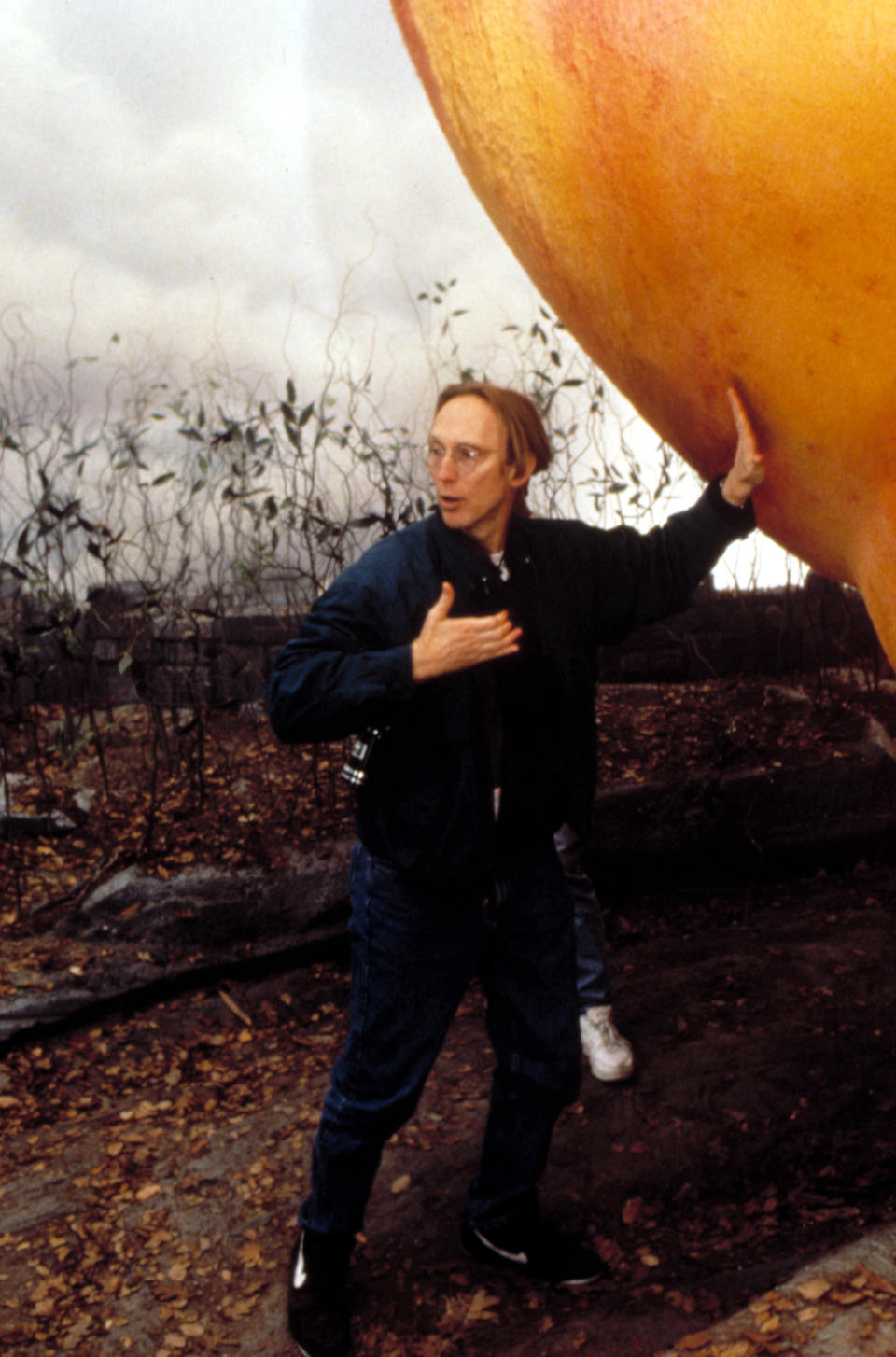
What was the sequence that took the longest?
This didn’t necessarily take the longest, although it probably wins that prize, but “Poor Jack” — when he’s been shot out of the sky, he lands, we find him in the graveyard in the arms of a stone angel, his jaw is broken off, and Zero retrieves that, and he puts it back on and he sings. It’s almost all one continuous camera move, the camera is circling almost to the very end. That was a really challenging shot. The animator, Anthony Scott, was probably on that for four months, I’d say. It was just very demanding. It’s Jack going from feeling like crap — “What have I done?” — and then he completely talks himself into feeling good about himself again. For no reason at all, he just decides, Well, I was pretty good. In fact, I was the best at what I did. It’s a huge range of acting and performing he has to go through in that. So that was the outstanding sequence that took forever and was very difficult to achieve.
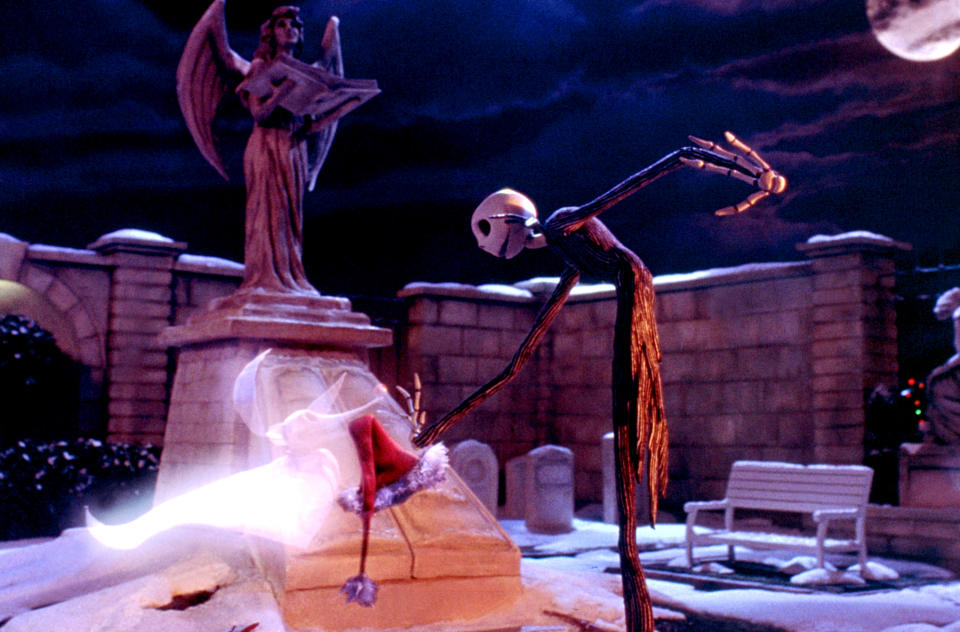
Zero the ghost dog is in some ways the most magical character to me. How did you achieve that effect?
He’s got a normal face and nose, and a mouth and a head that can rotate, but the ears and his body are ghostly. They’re always sort of flowing. Doing that type of animation is difficult in terms of finding the right materials. We ended up using lead sheeting — you know, the metal, which is really poisonous. But it also has amazing properties of being very flexible, easily adjusted, almost stretched. So we made his ears and his body out of this lead sheeting and we covered it with cloth tape.
And as far as, how was he a ghost? If there’s Jack in the scene and Zero is being petted — he’s actually animated at the same time, but he’s off to the side being reflected through a mirror, a half-silvered mirror. It’s an ancient, old-Hollywood technique, how they used to do ghosts and things. It’s called a beam splitter. [Editor’s note: This illusion is often referred to as Pepper’s Ghost.] It’s a just great old trick that we used in every shot that has Zero.
Every character who appears in Nightmare, even for a second, has such a strong personality. Is there any one that you have a particular affection for, or that was designed more by you than by Tim?
I developed Bat Boy, the guy who’s got a little tiny body and he walks on the tips of his bat wings. But he’s not my favorite. My favorite is the Corpse Boy, whose eyes are sewn shut. By any normal reckoning, you’d just say he’s disgusting and horrible. But he’s very sweet and appealing. He’s the kid that when Jack returns to town at the end and he’s walking up the steps, this little boy jumps onto Jack’s leg and just holds on to it? That’s the one for me. Corpse Boy.

I understand you and Tim fought about including the scene where Jack gives all the kids their real Christmas presents. Was that the biggest story disagreement that you had?
Yes. Mostly story-wise. everything was fine. We had the songs to work from; initially there wasn’t actually a screenplay, but in our story department, that’s where we really planned the movie. And me and my story department felt that it was really important to see those kids that had been frightened out of their wits with terrifying toys, now they were getting things fixed. And Tim hated it. But he was smart enough to show it to some of his friends, and they all agreed: “No, no, that’s gotta stay, Tim.” So he was open to saying “Hey, if everyone feels this way, maybe we should leave it in.”
There was another thing though — at the very beginning, I was worried there were too many songs because most animated musical films will have four or five songs at the most. That was kind of the norm. I was worried we’d start to lose the audience because we had 10 songs and a reprise. And Tim said, “You might be right, but we’ll animate it all and if there are too many we’ll just cut them out.”
Watch: Danny Elfman explains why kids hated The Nightmare Before Christmas:
And at the end of making the film, we were at a test screening, and Tim said, “Yeah, I think you’re right, we’ve got a few too many songs. I think we’d better cut something out. Maybe that ‘Poor Jack’ could go.” I stood up, and I think he saw the murder in my eyes, and I said, “Tim, we’re not cutting a single song in this movie.” [Laughing] He said, “Oh. OK.”
I don’t know what it was — reason? Fear that the whole crew would attack him? I knew the songs had earned their place in the film and we weren’t going to cut them. I mean, clearly Tim could do what he wanted, but he backed down. So that was a disagreement that didn’t last.
And there were a few other things. I proposed a different ending: Oogie Boogie was actually the evil scientist inside, operating him. Look, is it better? No, it was just another idea. That was probably the one thing I cooked up that Tim rejected. And I didn’t fight that hard for it, because there wasn’t that much work put into it. It’s just a normal process. You’ve got to find the best solution to things. And that kind of covers the extent of any story issues.

Twenty-five years after this film has been released, where do you see its influence on other films or other animators?
The main influence is simply that it allowed other stop-motion feature films to get made. As far as the look, the style? I mean, there are a million other artists that have aped that style. It’s been so long and it’s permeated so deeply, it’s hard to point to specific things. But I’ve seen many young illustrators — that’s how they draw. They draw Tim Burton-style, à la Nightmare Before Christmas.
Do you think appreciation for stop motion has grown in the past 25 years? Is there a chance it will become extinct because it’s such a labor-intensive process and studios don’t want to invest in it?
Stop motion is not for everyone. It’s not for everyone in the audience, and it’s not for everyone who does animation. It’s kind of a specialty world, and occasionally a film breaks through and reaches a larger audience. But for whatever reasons, it’s never had the success of the biggest CG films, or even the biggest Disney hand-drawn films. It’s kind of its own world; it attracts its own audience. What I’ve found is, it comes in waves and then it goes. After Nightmare we got to do James and the Giant Peach, but while we were doing that, the first Toy Story came out [in 1995]. And everything had to be CG after that. It was literally, “Well, this is over. Nightmare’s the first, and James and the Giant Peach will be the last.” And it was over. Besides Aardman Animations’ first film, Chicken Run, which was very successful, it was kind of over. And there were occasional films, but after Coraline [in 2009], there was suddenly another wave of stop motion. Frankenweenie came out the same year [2012] as The Pirates!, came out the same year as ParaNorman. None of those films were as successful as Coraline, so people all said, “Oh, yeah, we’re not gonna do this.” And right now, again, there’s going to be four stop-motion films going at once. [Laughing] If they were all spread out evenly, it would be so much better for the people making them.
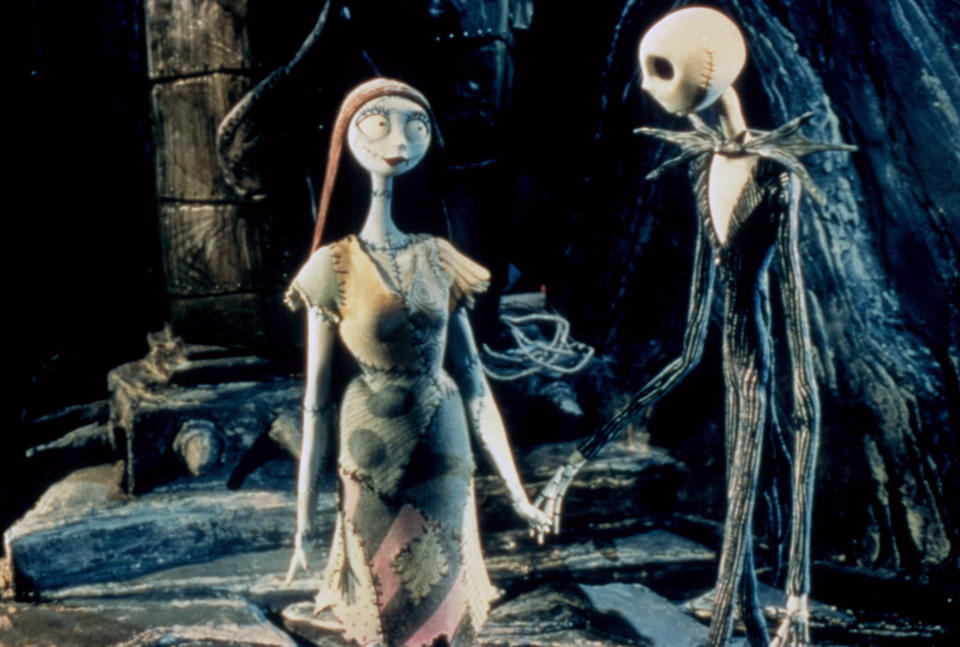
Is there a danger it will stop happening? No, there’s no danger. You go on YouTube, you’ll find amazing, funny little films that kids are making, 8-year olds, teenagers, 20-somethings. People like doing it and they do find an audience. As long as it’s got a great idea, great characters, there will be an audience. So it’s never going to really disappear. It’s just not going to be hugely successful in the same way as CG films. But if you can sell a lot of toys like Nightmare, in the end you are as successful.
What can you tell us about your new stop-motion film for Netflix, with Jordan Peele and Keegan-Michael Key?
We have two and a half minutes of animation finished. I’m having an incredible amount of fun. The best films I’ve made are the ones where I had total freedom to make the movie work. Meaning, yeah, there were going to be occasional notes, but I could really pretty much do it the way I saw it. And that’s Nightmare, that’s Coraline, and that’s this new film, Wendell and Wild. So crazy as it sounds, I’m having as much fun now as I had 25 years ago when we were making Nightmare.
The Nightmare Before Christmas is in heavy rotation on Freeform through the month and available on Blu-ray, DVD, and digital in a new 25th-anniversary edition.
Watch: What happened when Halloween‘s original Michael Myers loaned out his mask:
Read more from Yahoo Entertainment:

